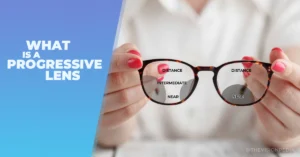|
Getting your Trinity Audio player ready...
|
Digital eye strain, also known as computer vision syndrome, is a prevalent condition resulting from prolonged use of digital devices such as computers, smartphones, and tablets.
It encompasses a range of uncomfortable symptoms triggered by the demands of extended screen engagement.
Understanding its causes, symptoms, and preventive measures is essential in maintaining visual comfort and well-being in the digital age.
Common symptoms of digital eye strain and vision syndrome encompass a range of discomforts.
These may include eye fatigue, blurred vision, and dry eyes.
Extended screen exposure can lead to these sensations, indicating the need for proactive measures to alleviate and prevent discomfort during prolonged digital activities.
The 20-20-20 rule is something you can follow in order to tackle Digital eye strain.
What is the 20-20-20 Rule?
The 20-20-20 rule is a simple technique to alleviate digital eye strain. Its purpose is to counteract prolonged screen focus by advocating a routine of taking breaks. Every 20 minutes of screen use, take a 20-second break to look at an object 20 feet away.
Here’s how to apply the Rule:
- Set a timer: While using your digital device, set a timer for 20 minutes.
- Look at a distance: When the timer goes off, shift your focus to an object at least 20 feet away. It could be a window, a door, or any distant point.
- Blink and relax: During this 20-second break, make sure to blink your eyes several times. Blinking helps keep your eyes moist and reduces dryness.
- Stretch and move: While looking at the distant object, take a moment to stretch your body or change your posture. This can ease muscle tension and promote overall comfort.
- Resume screen time: After the 20-second break, you can go back to using your digital device.
Things to remember:
- Consistency: Adhere to the rule consistently throughout screen time.
- Variety: Change the object you focus on during breaks and Blink naturally to keep your eyes moist.
- Environment: Ensure proper lighting and a comfortable workspace.
- Posture: Sit up straight and relax your shoulders.
Practicing the 20-20-20 rule throughout your screen time helps give your eyes much-needed rest, reduces strain, and contributes to better eye health.
Benefits of the 20-20-20 Rule
The 20-20-20 rule holds substantial benefits in combating eye strain stemming from digital device use.
By adhering to this practice, you provide your eyes with much-needed respite, allowing them to recover from the continuous screen focus.
This break fosters the replenishment of the tear film, diminishing dryness and irritation.
Furthermore, the rule grants the focusing mechanism time to relax, alleviating eye fatigue.
Embracing the 20-20-20 rule not only prevents immediate discomfort but also contributes to prolonged advantages—enhanced vision clarity, reduced risk of digital eye strain, and improved overall ocular health.
Moreover, the rule encourages regular blinking, fostering better eye lubrication and reducing strain during prolonged screen engagement.
Why 20 feet away?
Looking at something 20 feet away during the 20-20-20 rule serves a crucial purpose.
The eye’s accommodation system operates by adjusting the curvature of the lens to focus on objects at varying distances.
Prolonged screen focus strains the ciliary muscles responsible for this mechanism.
By gazing at a distant object, known as optical infinity, these muscles can relax.
Apart from ciliary muscle strain, other factors contributing to eye strain include the constant need to refocus, reduced blinking frequency, and exposure to blue light emissions from screens.
Adhering to the 20-20-20 rule helps mitigate these stressors, promoting better visual comfort during extended digital device use.
How can you tell if something is 20 feet away?
Determining if something is around 20 feet away involves employing common estimation techniques.
Utilizing visual cues like landmarks, familiar objects, or known distances aids in making an educated guess.
By comparing the apparent size of the object or assessing perspective, you can gauge its proximity accurately.
Alternatively, if a measuring device is at hand, it provides a precise way to confirm the distance.
These techniques empower individuals to apply everyday observations to adhere to the 20-20-20 rule effectively and ensure optimal visual relief during digital activities.
Why for 20 seconds?
The 20-20-20 rule advises a 20-second break to facilitate effective eye muscle relaxation.
This duration is chosen as it aligns with the blink rate and offers ample time for the eyes to refocus and rehydrate.
Allowing eye muscles to fully relax during the break reduces strain and supports clearer vision when returning to the screen.
Staying hydrated is crucial; consuming green tea, rich in antioxidants, during the break aids eye lubrication, preventing dryness and discomfort.
This proactive approach, coupled with the 20-20-20 rule, enhances eye well-being and promotes a more comfortable digital experience.
Who should follow the 20-20-20 rule?
The 20-20-20 rule holds relevance for anyone combating digital eye strain symptoms.
Those who spend prolonged periods on digital devices, like computers or smartphones, stand to gain by following this guideline.
Symptoms of eye strain encompass head pain, dry eyes, tiredness, and focus difficulties.
Adhering to the 20-20-20 rule becomes vital as it interrupts the cycle of strain, preventing symptoms from becoming chronic.
Regardless of age or occupation, anyone seeking relief from digital eye strain’s effects can benefit from this approach, underscoring the importance of taking regular visual breaks to safeguard ocular well-being.
Who came up with the 20-20-20 rule?
The 20-20-20 rule finds its origins with Dr. Jeffrey Anshel, who introduced it in the 1990s as a response to growing eyestrain resulting from heightened digital and near work.
This rule was coined to serve as a reminder for individuals to incorporate regular visual breaks into their screen-centric routines.
Dr. Anshel’s innovative approach underscores the importance of proactive measures to counter the effects of digital eye strain, making the 20-20-20 rule a practical strategy for maintaining visual comfort and overall eye health amidst the demands of modern technology.
Symptoms of Digital Eye Strain & Vision Syndrome
Symptoms of Digital Eye Strain & Vision Syndrome encompass a range of discomforts.
These may include dryness, itchiness, blurred vision, headaches, and eye fatigue.
Prolonged digital device use strains the eyes, leading to these sensations.
Recognizing these symptoms is vital in adopting preventive measures and adjusting screen habits to mitigate their impact and ensure lasting visual comfort.
What are other ways to prevent eye strain?
Preventing eye strain involves various strategies.
Over-the-counter eye drops provide relief from dryness, while antiglare protective screen covers reduce glare.
Adjusting screen settings like brightness and font size enhances comfort.
Maintaining an optimal distance from the screen minimizes strain.
Regular eye checkups ensure early detection of any issues.
Combining these approaches effectively guards against eye strain, ensuring lasting visual comfort during extended screen use.






